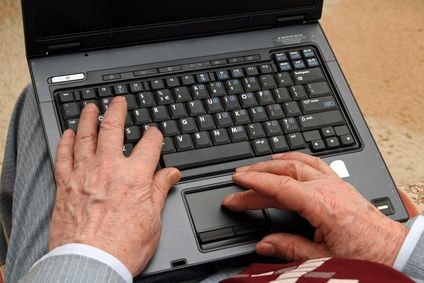Pointing Devices
There are many different types of pointing devices that you may encounter when using a computer, but each performs the same main functions which are: 1) to point the cursor to a location on the monitor, 2) to click, 3) to drag and 4) to select something.
The two most common pointing devices that you will encounter on campus are the mouse (typically utilized with personal computers) and the touch pad (typically found on laptops). While we won't go into detail as to how to use these pointing devices (please see the Additional Resources below for specific how-to information) we will talk a bit about the terminology you may encounter and need to know when completing your work on campus.
Useful Pointing Device Functions:
Left Single Click: Refers to clicking once on the left mouse button. This action is typically used to place the insertion point (flashing line) in a document to indicate where you would like to begin typing. It can also be used to select something such as an image, icon, window or other item on the screen.
Left Double Click: Double clicking is accomplished by quickly pressing the left mouse button twice while pointing to an item. Double clicking can be used to launch a program (if pointing to an icon on the desktop or start menu), open a folder (from within Windows Explorer or My Computer), open a file, or select an entire word from within a document.
Right Click: Right Clicking is typically used to bring up a shortcut menu of common options associated with a particular item. For example if you were to position your mouse pointer over an icon on the desktop and click the right mouse button once, a small menu containing options would appear. To carry out one of these options, you would then need to point your mouse pointer to the item of your choice and click on it using the left mouse button.
Scroll: Scrolling changes the view on the computer screen by moving the text and graphics that are displayed up and down or left and right. Scrolling can be accomplished using the scroll bars on the right side or bottom of a window. To scroll, you would position your mouse over the scroll bar (for example the scroll bar on the right), hold down the left mouse button and move the mouse in a downward motion. This would scroll the view down. Many computer mice also possess a scroll wheel that is found between the left and right mouse button. The scroll wheel can be used to scroll the view up and down.
Drag: Dragging is used to select an area of the computer screen. For example, if you would like to select many icons on the desktop or many lines of text in a document, you could accomplish this by clicking the mouse in the upper-left corner of the area that you would like to select, hold down the mouse button and moving your mouse in a downward-right motion until all of the desired items were selected. Dragging can also be used to move items such as words in a document, icons on the desktop, or files in Windows Explorer. To accomplish this, you would click once on the individual item to select it (with the left mouse button), hold down the mouse button and move the mouse until the pointer is hovering above the new desired location. This action is known as "drag-and-drop".

Additional Resources:
Microsoft Demo: Learning to Use the Mouse
http://windows.microsoft.com/en-us/windows-vista/demo-learning-to-use-the-mouse
The Top Ten Mouse Tips Everyone Should Know
http://www.computerhope.com/tips/tip32.htm
How to Use a Touch pad on a Laptop
http://www.itbuddy.org/how-to-use-a-laptop-touchpad.html

